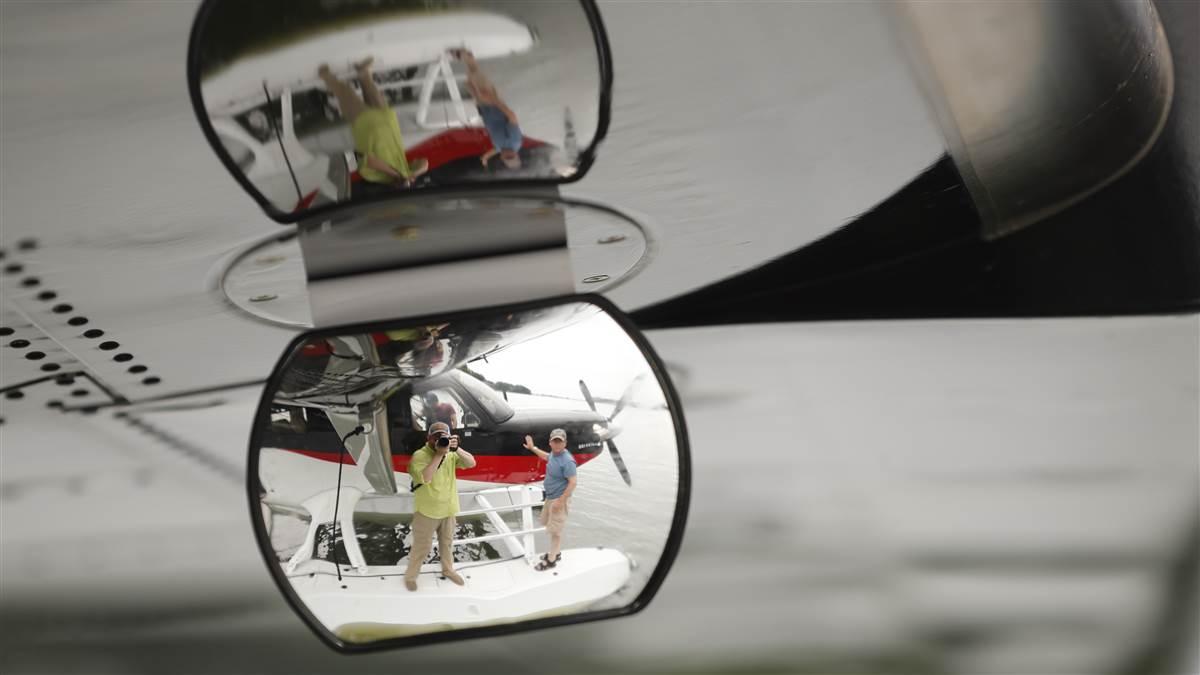
Go for it
Words of encouragement
Jill W. Tallman’s article in the latest Flight Training (July 2018, “Around the Patch: First Timers”) struck a chord. Just before I retired, 10 years ago, I decided to acquire a commercial certificate for no particular reason other than continual honing of my airmanship and knowledge. When I passed the checkride, my instructor encouraged me to go for a CFI ticket. At the time, I thought it was out of reach. Fast forward four years, and I decided teaching flying was a good way to spend retirement. I took the plunge, and passed the CFI checkride in September 2012.
What’s the point of this seemingly self-indulged rambling? If you are going for a commercial certificate and have any thoughts of then getting your CFI, do it. Don’t do what I did by allowing a big gap between the two.
So, write about your progress. There’ll be lots of us rooting for you. Judging by your writings, you’ll be a good instructor.
Al Alwin
Minneapolis, Minnesota
Bad timing
I greatly appreciate my monthly Flight Training. I find the articles give me additional viewpoints to show to my students. Often a picture is worth a thousand words kicks in with your graphics.
However, “Pilot Speak” from July 2018 has a major error. Zulu time is a time zone, just like Eastern Daylight Saving Time (Zulu -4 hours) or Standard time (Zulu -5 hours). It is not a specific time. There are 24 time zones in the world because of our Earth rotating in a 24-hour day cycle. The letters of the alphabet are used to designate time zone. They skip O and Q because of the possible misreading of 0001O and 0001Q rather than 0001Z.
The Greenwich Meridian (0 degrees of longitude) is in the Zulu time zone so it is where the day begins. The U.S. military uses it as a reference mark around the world.
Also, there is no 2400Z. You can go to 2359:59 and on the next stroke you move to 0000Z the next day.
Alan Williams
Bossier City, Louisiana
All wet
I just finished reading “In the Drink” in the June issue of Flight Training. While it is a good primer of what to do if you should ever find yourself heading for water instead of land, you missed two important points.
In addition to being concerned about your thumbs, you should also be concerned about your ankles and teeth. Just before touching down you should ensure your feet are flat on the floor and not on the rudder pedals. Also, remove your headset to further reduce the possibility of getting tangled up and possibly losing a few teeth.
Finally, concerning direction of landing on water, the Cessna Skyhawk pilot’s operating handbook reads: “Approach—high winds, heavy seas—into the wind; Light winds, heavy swells—parallel to swells.”
Also, I highly recommend taking an emergency underwater egress course. It only takes a day and is done in the safety of a local civic swimming pool. Even as a navy diver I found the course to be enlightening.
Darren Rich
Nanaimo, British Columbia
Good eats
Sylvia Horne’s article, “Flying with Food,” in the May 2018 issue of Flight Training magazine is perhaps the best article I’ve read in a long time. Thank you, AOPA, for printing such a valuable piece of information, and thanks, Sylvia, for being bold enough—and accurate—to trash junk foods and promote healthy foods.
Chris Pfaff
Danville, Pennsylvania
Talk like a pro
As a military pilot and CFI I was disappointed to see Roger, Wilco together in “Pilot Speak.” Wilco assumes you understand and will comply. Roger, Wilco is redundant.
John Schaures
San Diego, California
Flight Training regrets the error.


